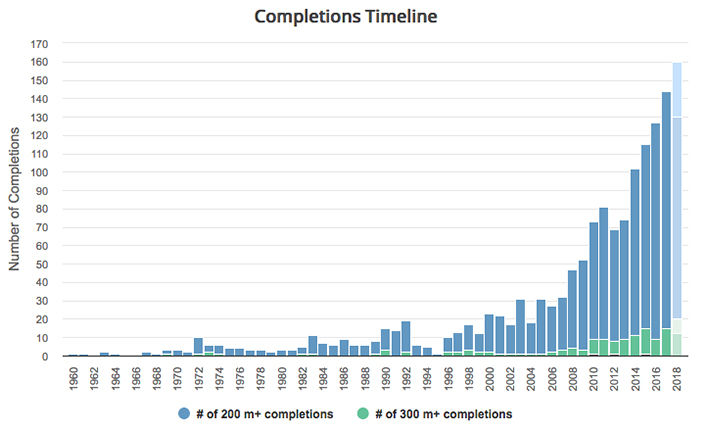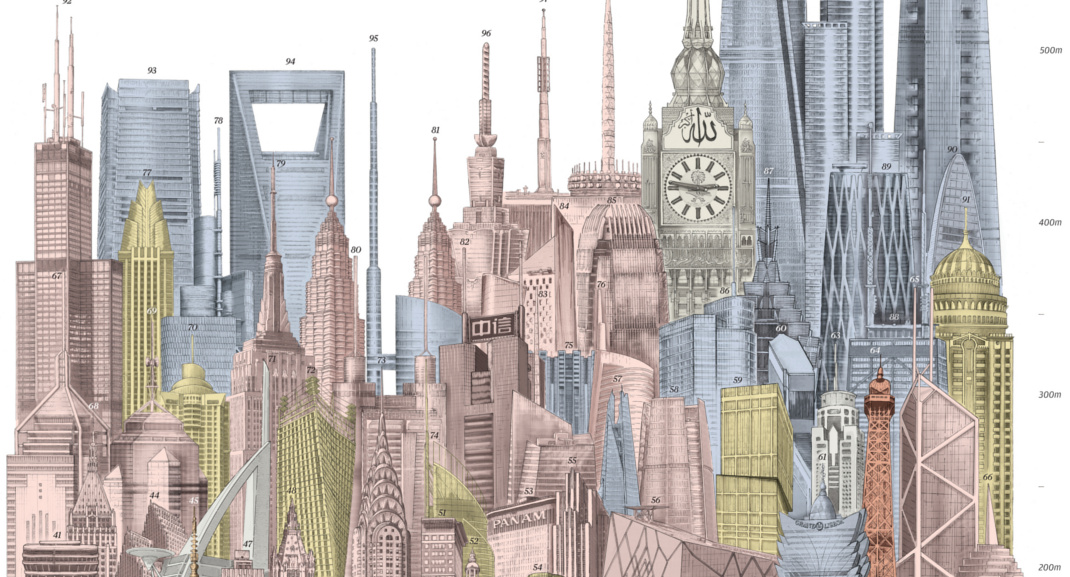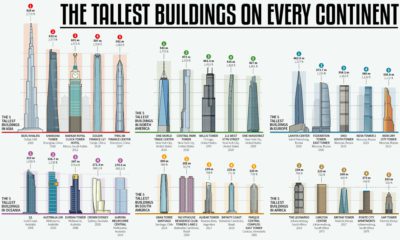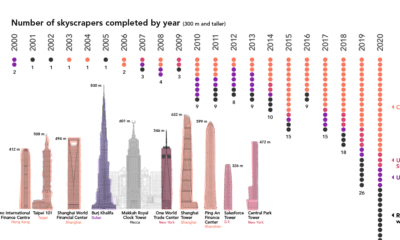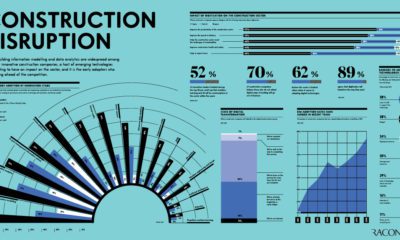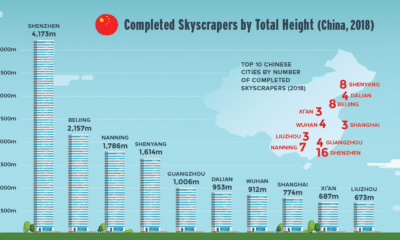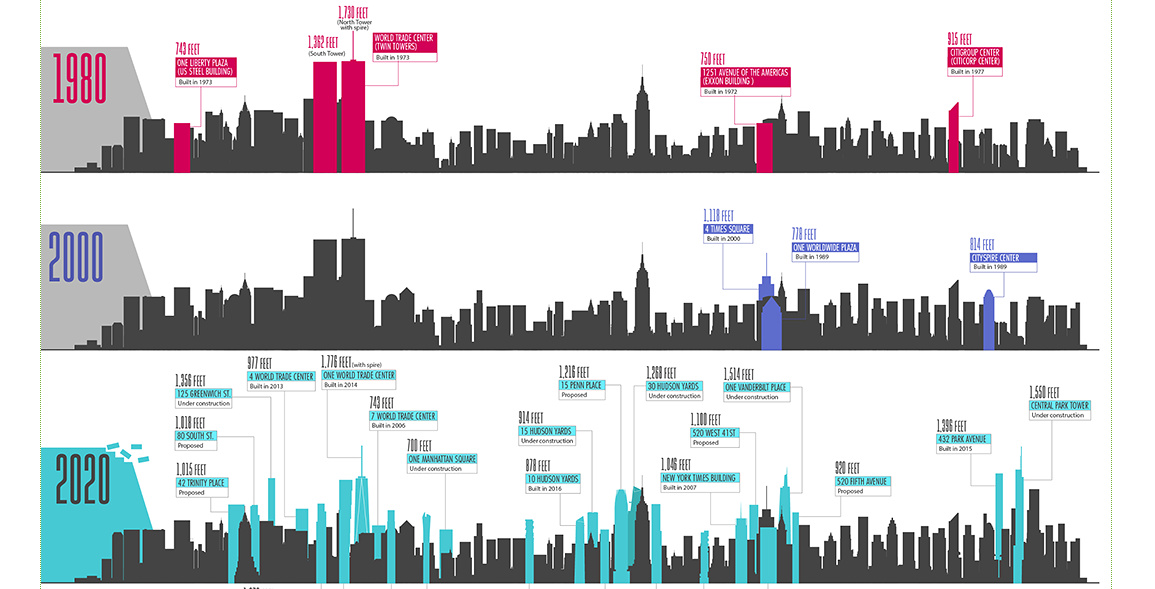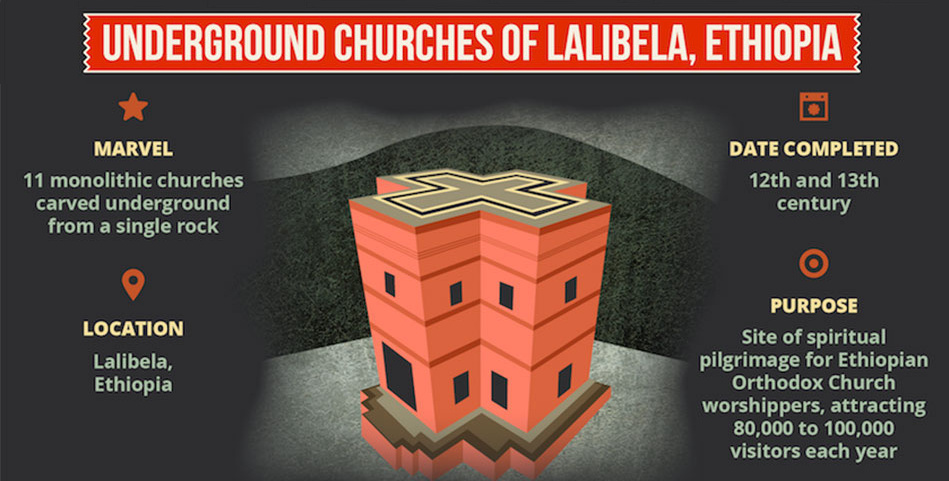As the creator of today’s visualization, Alberto Lucas López, points out, “the world’s tallest buildings have acted as barometers”. Another way of putting it? Our biggest architectural accomplishments are highly visible symbols of what society values most, and those values have changed over time. Today, the paramount belief system in many parts of the world is in capitalism, and there is no more potent marker of the economic might than fantastically tall commercial skyscrapers. Today’s visualization is an effective way to take in the mind-bending scale of the newest generation of megatall buildings. It’s headlined by Jeddah Tower, a skyscraper currently under construction in Saudi Arabia that will smash the one kilometer mark when it’s completed in 2019.
Cities are Growing Up
In general, only very large cities have the resources to build and support extremely tall buildings. With the explosion of urbanization around the world and developing economies asserting themselves in high profile ways, the stage is set for a global skyscraper boom.
In the last two years, 39 skyscrapers taller than 300m have been constructed, with five of the them eclipsing the height of the Empire State Building. Global skyscraper construction has increased a whopping 402% since 2000.
High-rise Hot Spots
China Nearly every sizeable Chinese city has skyscrapers under construction, and the numbers are staggering. Since 2012, China has added 38 skyscrapers over 300m (~1,000 ft) in height, and there are another 16 skyscrapers on the way in 2018. In particular, the Pearl River Delta megaregion, which is anchored by Hong Kong, Shenzhen, and Guangzhou, has seen an astonishing commercial construction boom. Today, 20 of the 100 tallest buildings on earth are located in just this one urban megaregion of China. China’s Top 10 Tallest Buildings In total, 46 of the world’s 100 tallest skyscrapers are now located in China, and that number is sure to increase in coming years. United Arab Emirates Construction has been relentless in UAE for decades, and much of that development has been vertically-oriented. Today, Dubai is home to nearly 1,000 high-rise buildings, and there are 13 projects currently under construction that will hit or exceed the 300m mark. UAE’s Top 10 Tallest Buildings Russia While the skylines of many European cities are conspicuously low-rise, an exception to that rule is in Moscow’s International Business Centre, where four 300m+ towers have been completed since 2012. Russia’s Top 10 Tallest Buildings
What about the United States?
In the early 20th century, the United States was the undisputed champion of skyscraper construction, but that has tapered off dramatically. In fact, only six commercial towers over 300m have been constructed in the last 20 years. The exception may be the city that started it all: New York. There are currently 30 skyscrapers under construction in NYC, fueled in part by a red-hot luxury real estate market. America’s Top 10 Tallest Buildings (Under Construction) Philadelphia and San Francisco will soon have new additions to their skylines as Comcast and Saleforce complete their flagship construction projects. If current construction numbers are any indication, America’s love affair with the skyscraper may be reignited in urban centers across the country. on Even while political regimes across these countries have changed over time, they’ve largely followed a few different types of governance. Today, every country can ultimately be classified into just nine broad forms of government systems. This map by Truman Du uses information from Wikipedia to map the government systems that rule the world today.
Countries By Type of Government
It’s important to note that this map charts government systems according to each country’s legal framework. Many countries have constitutions stating their de jure or legally recognized system of government, but their de facto or realized form of governance may be quite different. Here is a list of the stated government system of UN member states and observers as of January 2023: Let’s take a closer look at some of these systems.
Monarchies
Brought back into the spotlight after the death of Queen Elizabeth II of England in September 2022, this form of government has a single ruler. They carry titles from king and queen to sultan or emperor, and their government systems can be further divided into three modern types: constitutional, semi-constitutional, and absolute. A constitutional monarchy sees the monarch act as head of state within the parameters of a constitution, giving them little to no real power. For example, King Charles III is the head of 15 Commonwealth nations including Canada and Australia. However, each has their own head of government. On the other hand, a semi-constitutional monarchy lets the monarch or ruling royal family retain substantial political powers, as is the case in Jordan and Morocco. However, their monarchs still rule the country according to a democratic constitution and in concert with other institutions. Finally, an absolute monarchy is most like the monarchies of old, where the ruler has full power over governance, with modern examples including Saudi Arabia and Vatican City.
Republics
Unlike monarchies, the people hold the power in a republic government system, directly electing representatives to form government. Again, there are multiple types of modern republic governments: presidential, semi-presidential, and parliamentary. The presidential republic could be considered a direct progression from monarchies. This system has a strong and independent chief executive with extensive powers when it comes to domestic affairs and foreign policy. An example of this is the United States, where the President is both the head of state and the head of government. In a semi-presidential republic, the president is the head of state and has some executive powers that are independent of the legislature. However, the prime minister (or chancellor or equivalent title) is the head of government, responsible to the legislature along with the cabinet. Russia is a classic example of this type of government. The last type of republic system is parliamentary. In this system, the president is a figurehead, while the head of government holds real power and is validated by and accountable to the parliament. This type of system can be seen in Germany, Italy, and India and is akin to constitutional monarchies. It’s also important to point out that some parliamentary republic systems operate slightly differently. For example in South Africa, the president is both the head of state and government, but is elected directly by the legislature. This leaves them (and their ministries) potentially subject to parliamentary confidence.
One-Party State
Many of the systems above involve multiple political parties vying to rule and govern their respective countries. In a one-party state, also called a single-party state or single-party system, only one political party has the right to form government. All other political parties are either outlawed or only allowed limited participation in elections. In this system, a country’s head of state and head of government can be executive or ceremonial but political power is constitutionally linked to a single political movement. China is the most well-known example of this government system, with the General Secretary of the Communist Party of China ruling as the de facto leader since 1989.
Provisional
The final form of government is a provisional government formed as an interim or transitional government. In this system, an emergency governmental body is created to manage political transitions after the collapse of a government, or when a new state is formed. Often these evolve into fully constitutionalized systems, but sometimes they hold power for longer than expected. Some examples of countries that are considered provisional include Libya, Burkina Faso, and Chad.
